Field work
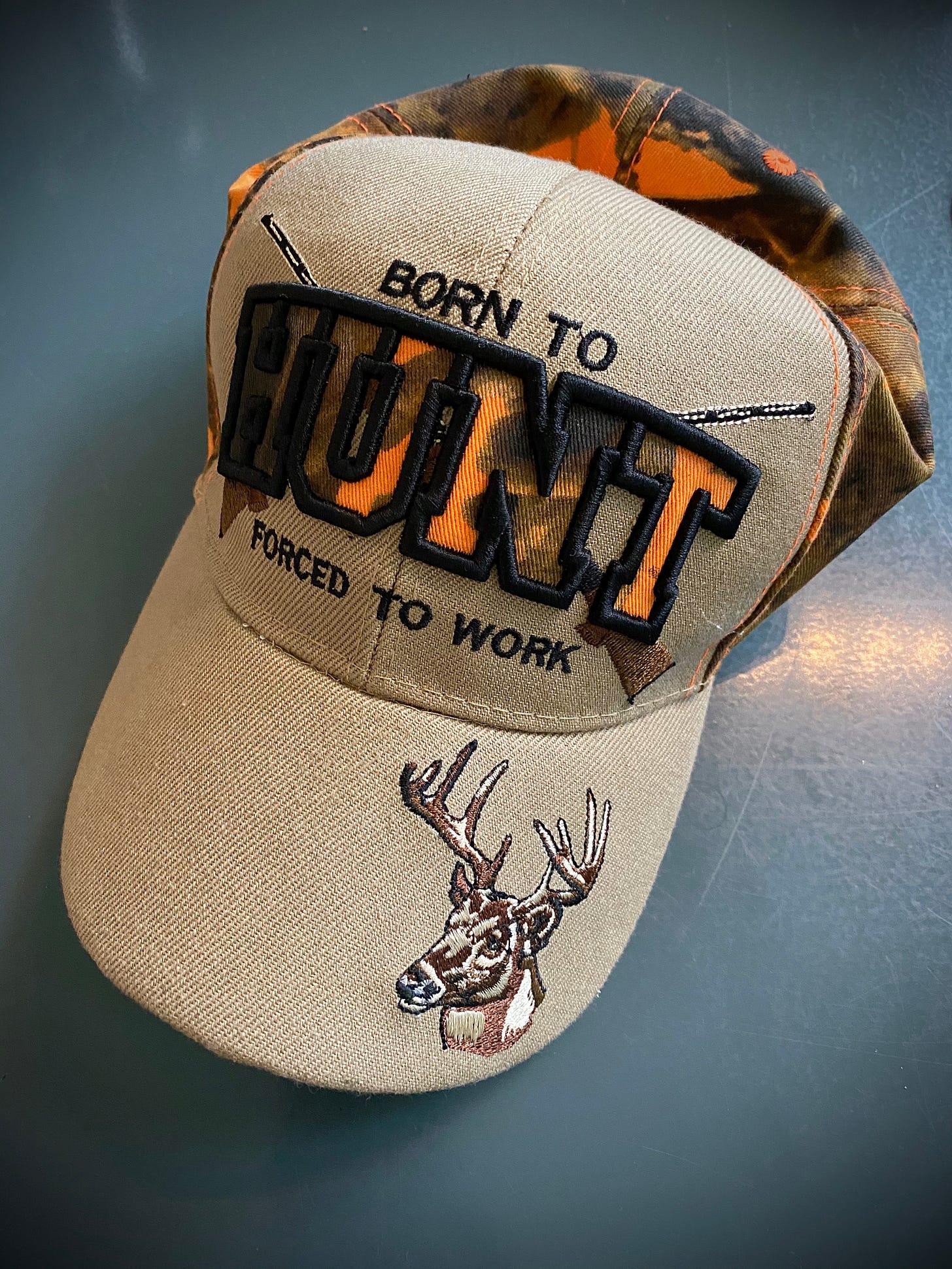
I have an ugly ball cap I bought for six bucks a couple of years ago at a gas station in Johnson City. It’s safety orange camo embossed with images of a deer, a pair of rifles, and an aphorism:
BORN TO HUNT
FORCED TO WORK
I don’t hunt deer or anything else, at least not regularly, but I think the hat is an accurate representation because what it declares is true, if more in an evolutionary sense than an avocational one. My nature is not to sit in front of a screen and manipulate pixels, though that task, I suspect, mimics some of the instinctual tasks for which we are wired, like scanning our field of vision for predators or prey, aiming a weapon, or foraging in the wild field. We are meant to hunt and forage every day to live, not to farm crops to fill up silos, nor to farm data to fill up investment accounts.
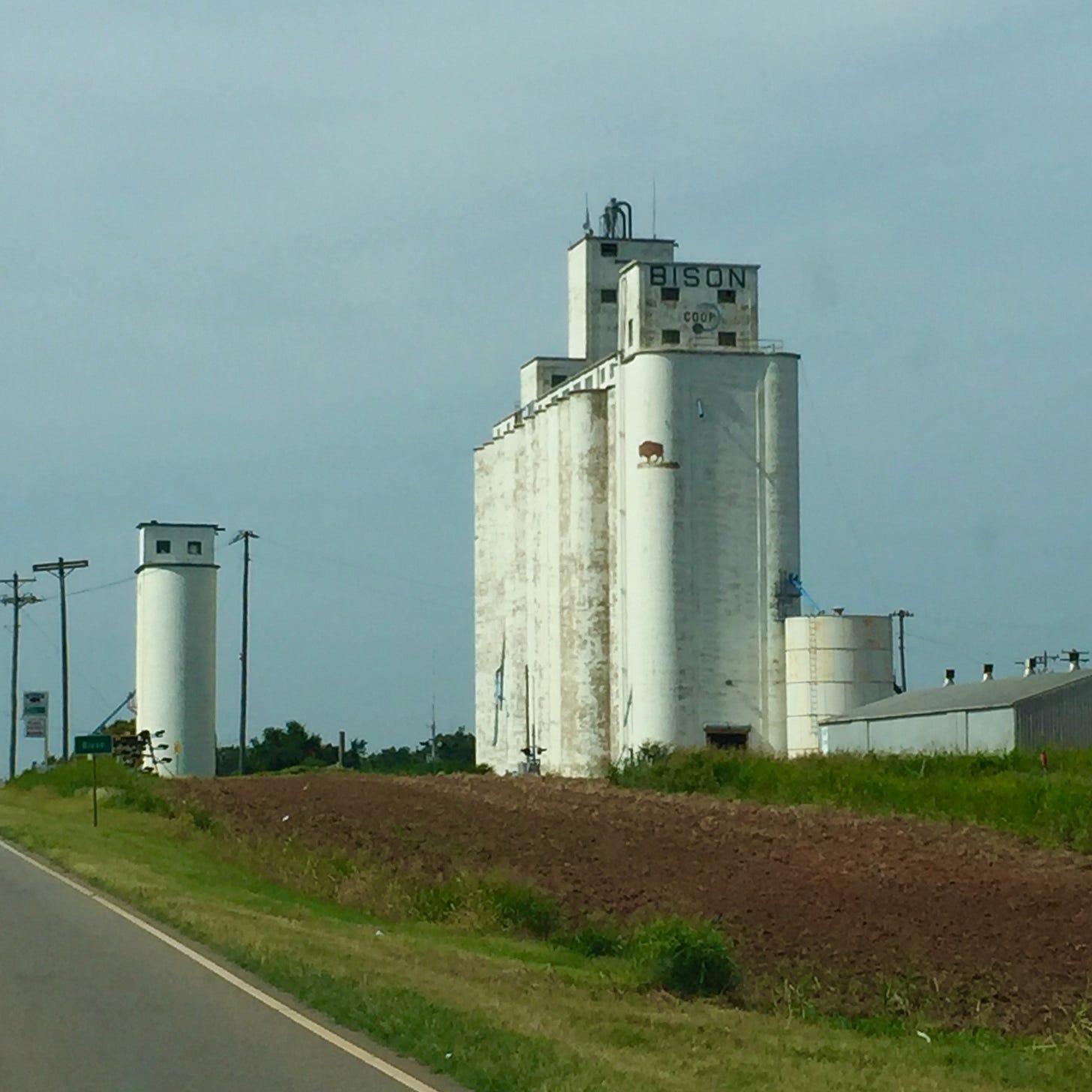
I suspect that truth is why I have felt more balanced the more I have been able to integrate daily walks and runs in the urban woods into the routine of my life. That I am able to do so is partly a luxury earned through an aptitude for pixel farming and for hunting for weaknesses in the documentary weaves of complex securities transactions. And on my morning walks with baby I witness a different version of that truth, when we see the men who live outside emerging from their campsites in the woods behind the dairy plant, pulling salvaged bike trailers or bags for cans as they head out for a day’s forage.
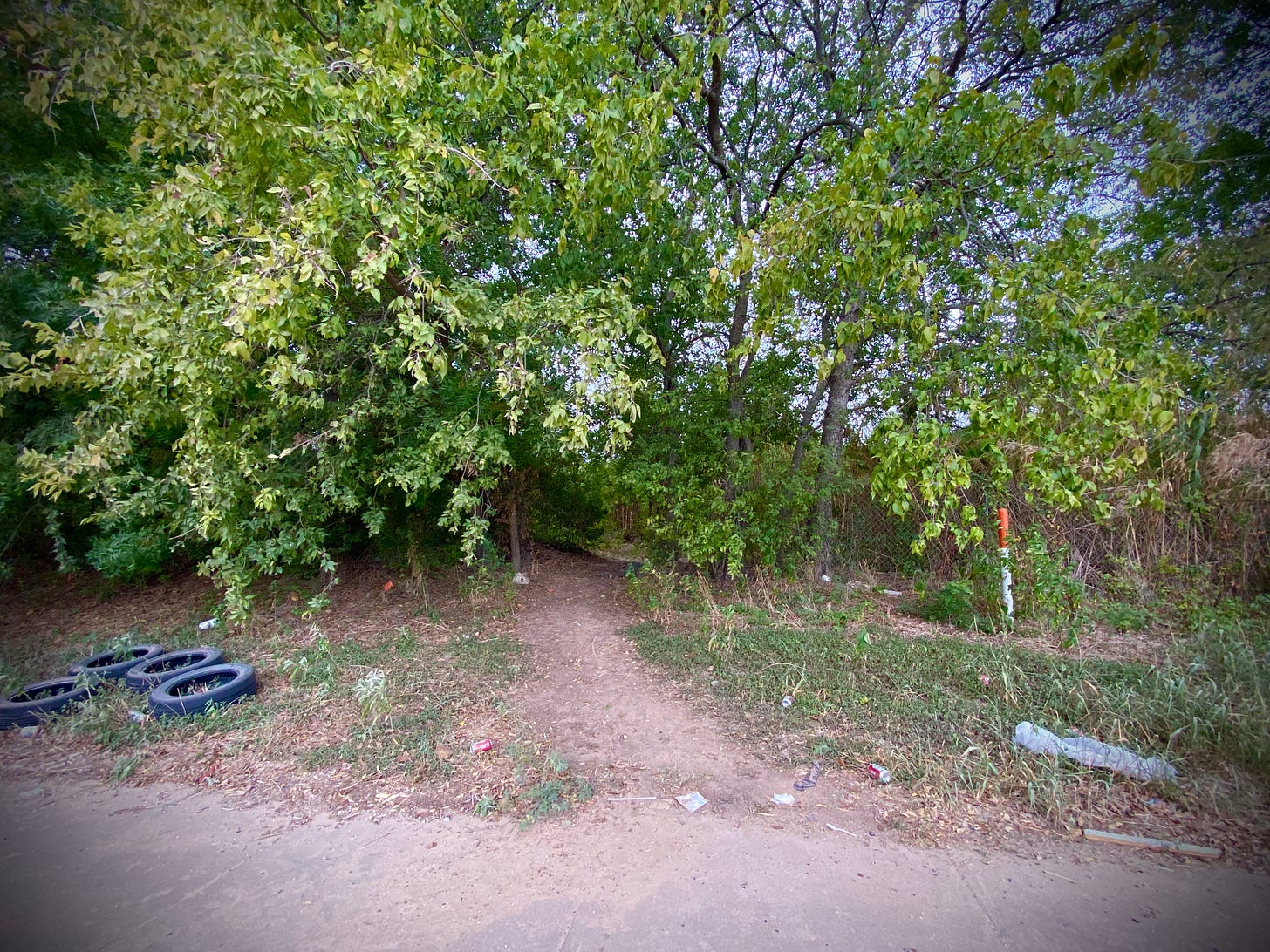
I’ve gotten to know one of those guys reasonably well over the years. Call him Phil. I’m planning to drop off some stuff for him today, masks and books and maybe some gear. Assuming the place he stays is still there, and he has not yet been displaced.
I’ve known Phil for five or six years now, since that Sunday morning when I found him trying to find a way through the chain link fence around the undeveloped lot behind the door factory, and was able to help him get out because I knew the neighbor’s padlock code to unlock it. We got to talking, and learned that we were born in the same year, both transplants to Austin from other parts of the country. Over the course of the next couple of years, we would run into each other often, usually in the woods. He told me where he stays, and after a while I started dropping stuff off there for him
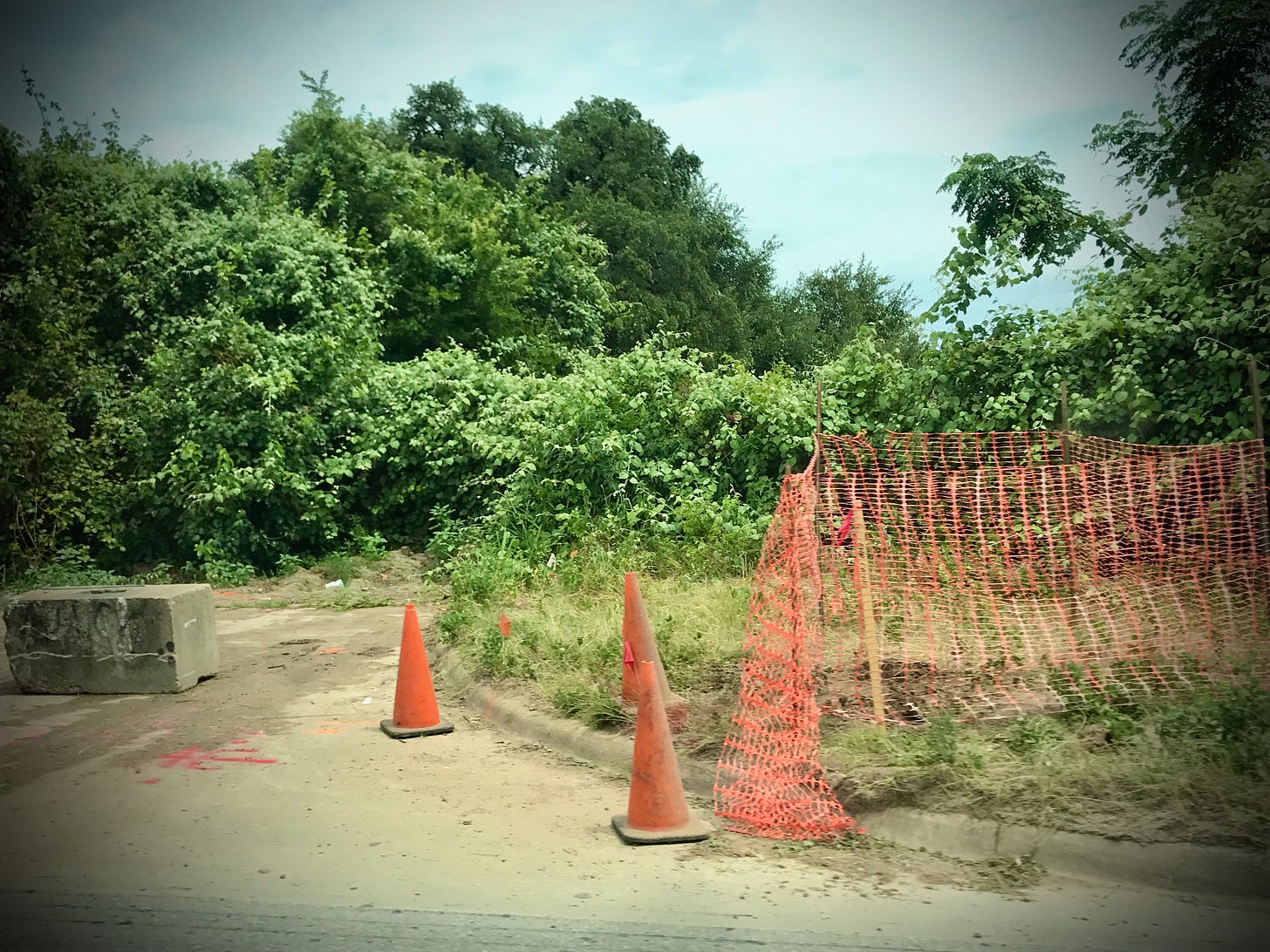
I don’t know Phil’s whole story. He has shared fragments, in conversations and letters, which are often funny and often sad. He is smart and well-read. He wrote that my novel Tropic of Kansas was “like a cross between Walker Percy and Bomba the Jungle Boy.” He talks about movies he has seen, and people he has known. About his relationship with his dad and his brother, back in the Northeast. In one of his most moving letters, he described what it was like the first time a cop in San Antonio asked him if he was homeless, and he realized the answer was yes.
Phil told me he found the place where he stays a decade ago, after he walked back from Missouri. It’s an abandoned building near a highway, a structure that appears to have once been a single-family home and more recently served as the office of an industrial minerals operation. You can see it from the road, but you wouldn’t even know there’s a building there, because it’s completely covered in mustang vine and other wild vegetation, under the canopy of one of the oldest and thickest oak trees in the county, which has somehow survived as the pavement gets closer and closer.
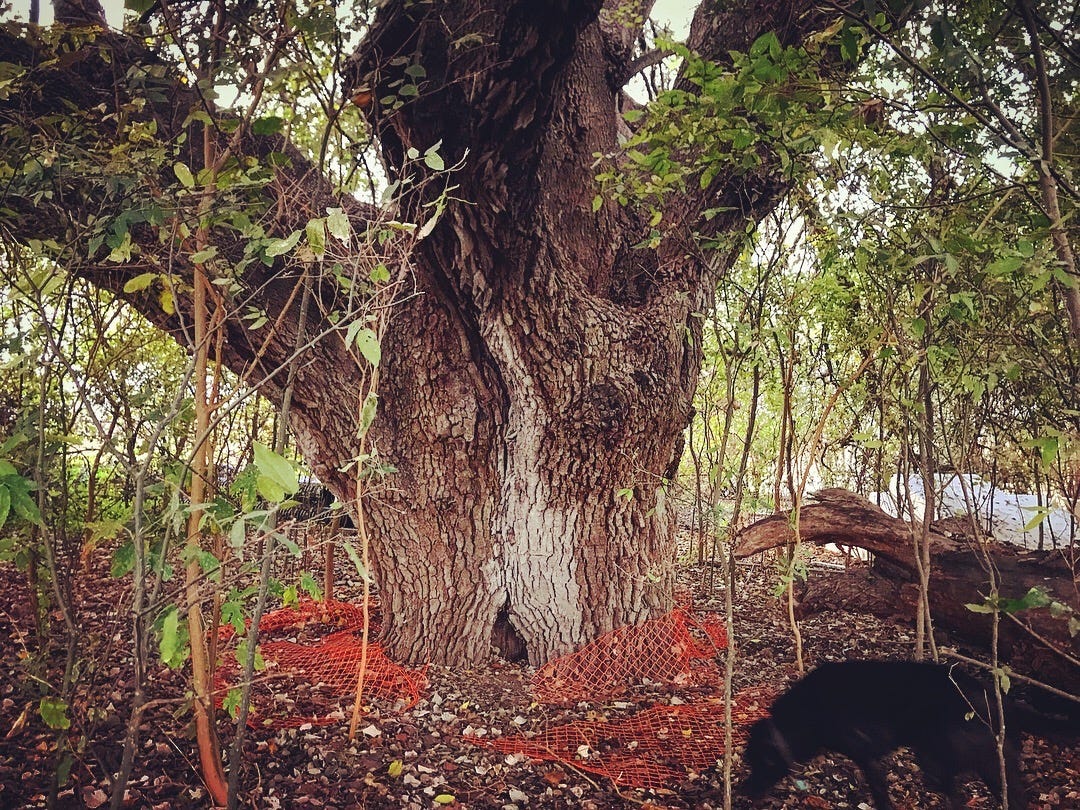
Phil lives the life of an urban forager. He collects cans and other metal to sell to the scrap dealer, and repurposes things the city leaves behind that he can use. He makes things, including his shoes and hats. He sewed me a ball cap out of old blue jeans and discarded place mats. His place is super tidy, with the gear and raw materials he has collected hung from nails on the walls, most of which are tagged with the graffiti of an earlier generation of visitors. One room is a library and art studio in which he makes collages from magazine and newspaper clippings. He is busy every day. But you can tell when you talk to him that part of the reason why he lives the way he does is the untenability for him of what qualifies as work within the mainstream system in which we are all expected to be willing participants. The kind of work you can properly call labor.
History is full of stories of hermits living in remote places, like Saint Onuphrius and the Irish ascetics the first Viking settlers found living in the coastal caves of inhospitable Iceland. We rarely notice how many people are living like that in our midst, crossing over into a different way of living in the city, exiled by their failure or inability to conform to what the system requires.
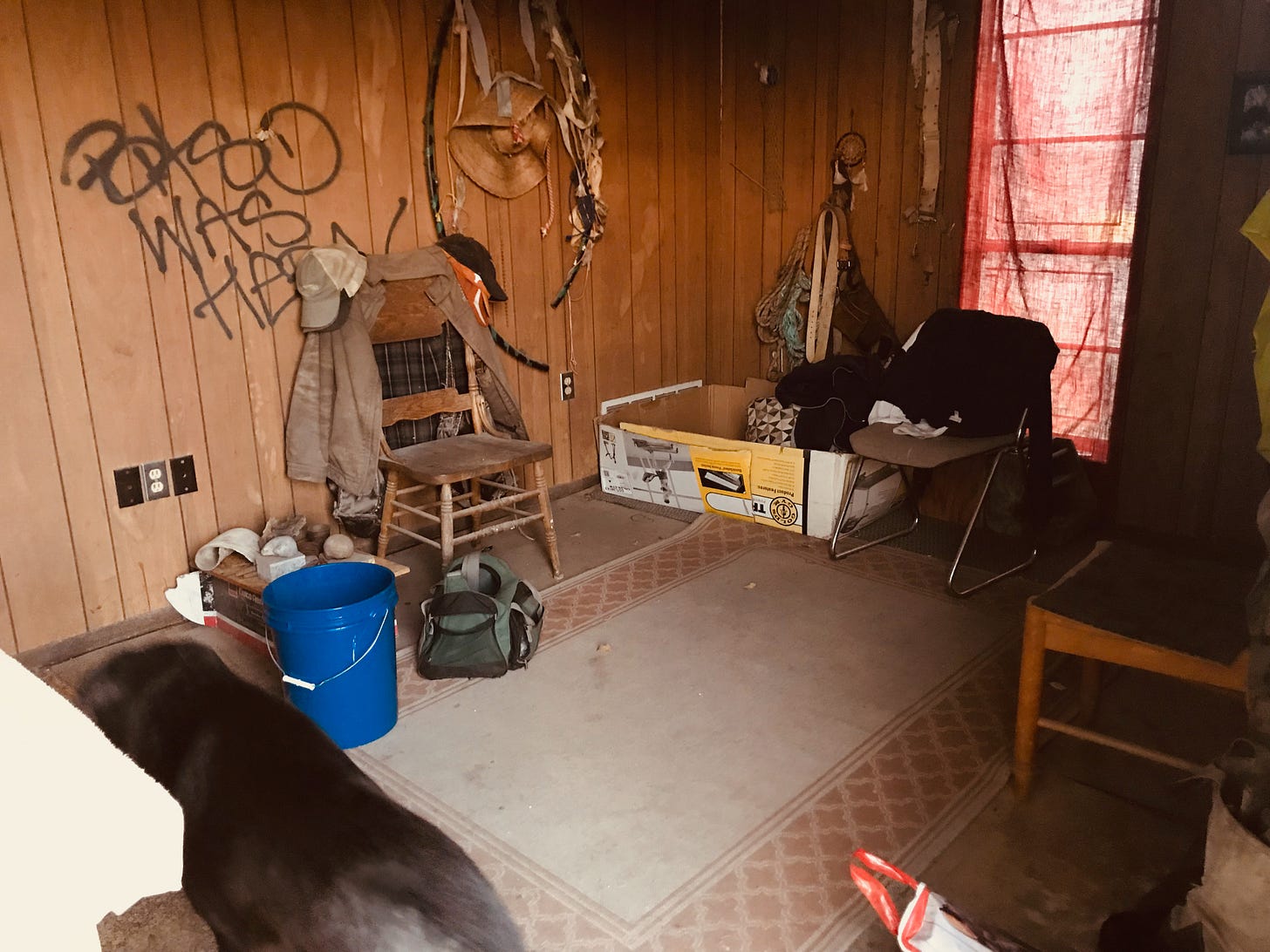
Last year I volunteered for the local homeless count, figuring I already knew where many of the camps are. I was assigned to a quadrant across the river. We met up in the grocery store parking lot at 3 a.m. with our flashlights and clipboards, and spent about six hours at our task. We found people sleeping outside just about wherever we went, starting with the people sleeping in the cars in the parking lot, and ending with camps at remote side trails deep in the riverfront parklands that I often explore. Under the bridges that cross the creeks behind Riverside and Pleasant Valley, we found entire shanty towns, and collected the story of every one of them who was willing to share. The last camp we found was the biggest, like a huge village in the woods between a library and a major road. It had been recently cleared out, probably to make room for the redevelopment project under construction there now, but still full of the things people couldn’t carry with them..

The camps are all out in the open now, on the grassy medians and the concrete underpasses. There’s a huge camp on state-owned land near Phil’s place, created by the governor last year in response to the City Council’s liberalization of the public camping laws. It even has its own government. Like all of us, I am a daily witness to homelessness, and I am confident that the estimates of the homeless population here like the one our ad hoc neighborhood census generated miss a huge number of people like Phil who have mastered the art of disappearing into the negative space of the city.
I don’t purport to have any real understanding of the root causes of our epidemic of homelessness, and I know every story is unique, often involving substance abuse, domestic abuse, mental health issues, prison release, the return of combat veterans to civilian life, or racial injustice. But economic issues run through it all. Our labor is the thing we must sell in order to have shelter and food, and my interactions with the denizens of our urban woods sometimes make me wonder whether the incongruity between that system and our true natures is a fundamental driver of homelessness.
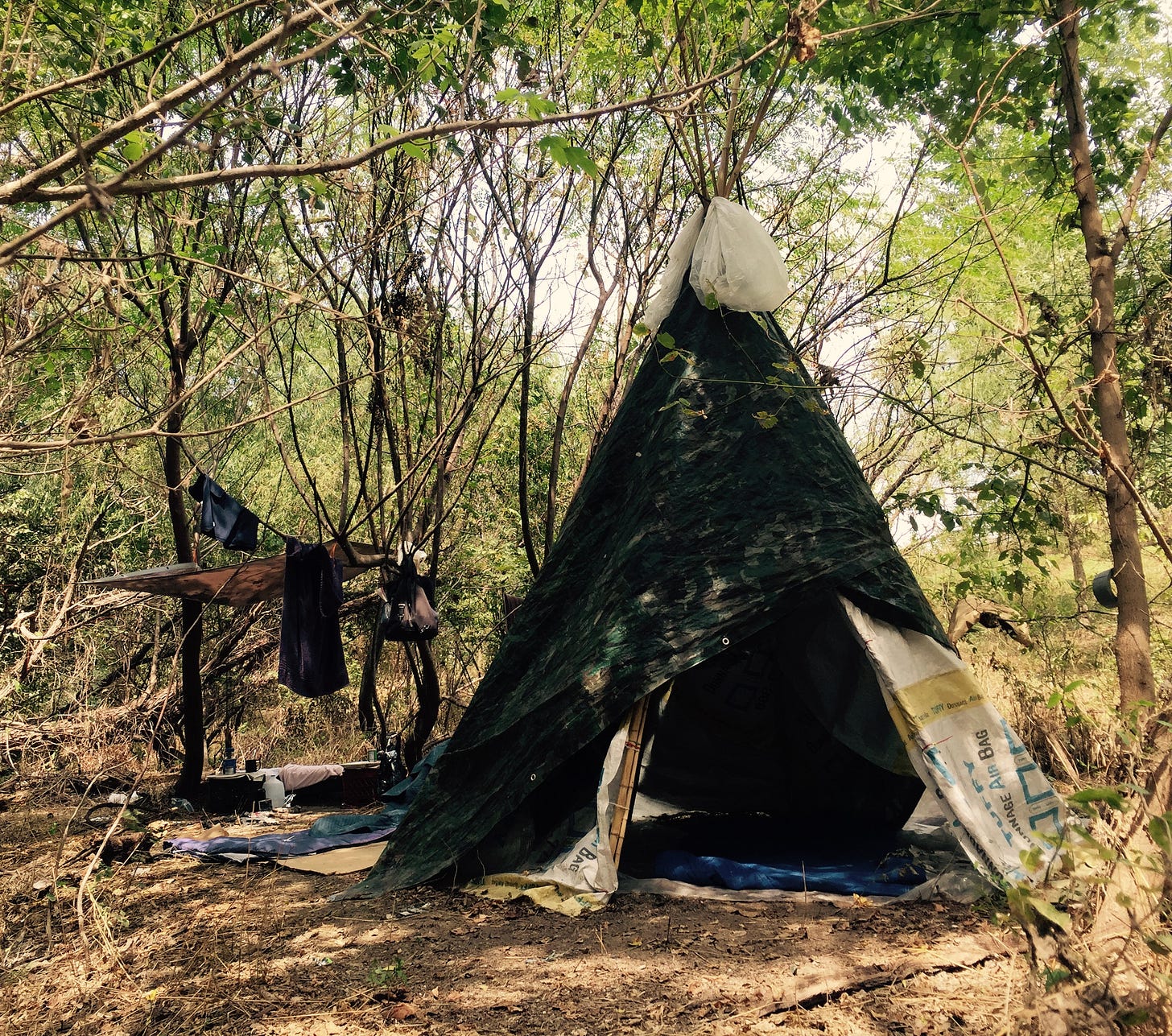
In his 2017 book Against the Grain: A Deep History of the Earliest States, James Scott makes a pretty convincing case that cities and forced servitude go together, in a powerful counternarrative of “how we came to be sedentary, cereal-growing, livestock-rearing subjects governed by the novel institution we now call the state,” mining recent research across disciplines to turn the conventional wisdom about the agricultural revolution and the formation of human civilization on its head:
Sedentism and the first appearance of towns were typically seen to be the effect of irrigation and of states. It turns out that both are, instead, usually the product of wetland abundance [i.e., previously nomadic people settling around biodiverse wetlands that provided a wide array of wild foods]. We thought that sedentism and cultivation led directly to state formation, yet states pop up only long after fixed-field agriculture appears. Agriculture, it was assumed, was a great step forward in human well-being, nutrition, and leisure. Something like the opposite was initially the case. The state and early civilizations were often seen as attractive magnets, drawing people in by virtue of their luxury, culture, and opportunities. In fact, the early states had to capture and hold much of their population by forms of bondage and were plagued by the epidemics of crowding. The early states were fragile and liable to collapse, but the ensuing ‘dark ages’ may often have marked an actual improvement in human welfare. Finally, there is a strong case to be made that life outside the state—life as a ‘barbarian’—may often have been materially easier, freer, and healthier that life at least for novelties inside civilization.
The bargain with Demeter, in other words, was a bad deal. A system of servitude to the idea of accumulating surplus—first of edible crops, quickly concentrating on the grain crops that are easiest to store and to count and thereby convert into a medium of exchange, leading to a different kind of surplus. We all benefit now from the improvements in welfare and societal resilience that system has achieved in the intervening millennia, but those core design flaws persist, and most of us still exist in a condition of servitude, however pampered a servitude it may be. It can’t be an accident that Labor Day occurs at the end of the growing season, even though it’s a holiday focused on industrial workers.
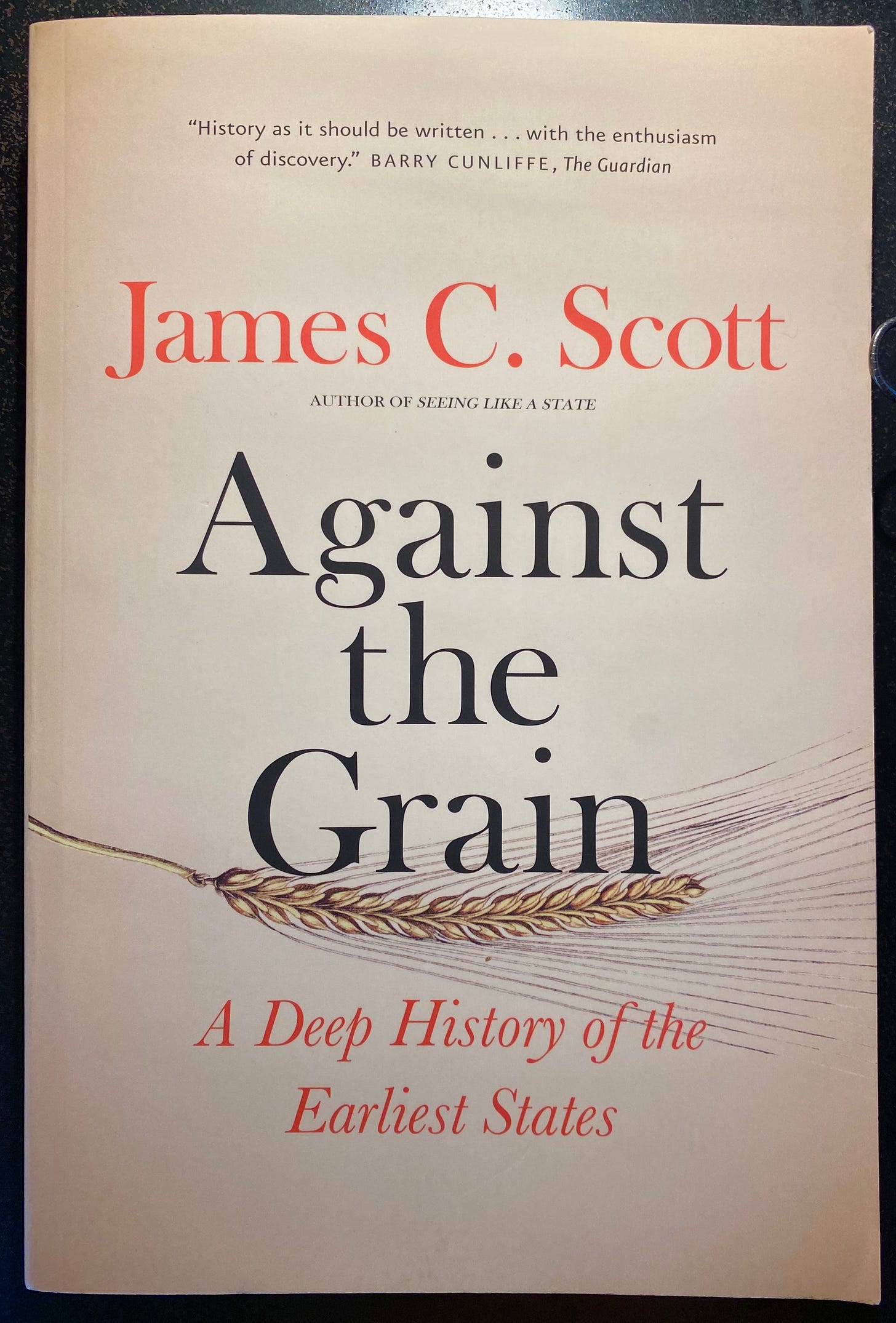
It’s hard to imagine a path out of this Anthropocene conundrum, even as it becomes more obvious once you start to look for it. You can’t hack the basic architecture of the agricultural revolution, and you can never really get off the treadmill, unless you want to live like Phil. But by integrating a different experience of nature into your daily life, one that is closer to our own true nature, you can maybe learn to feel how you are meant to feel. A Paleo diet for the soul.
Sidewalk snappers and long-tailed arthropods
Baby and I found one such example Sunday morning, right on the sidewalk in front of our house: a tiny snapping turtle caked in sand, perhaps trying to find its way to the water from whatever terrestrial burrow its mother laid its egg in. Snapping turtles are a lot cuter when you can pick them up without worrying they will bite your finger off.
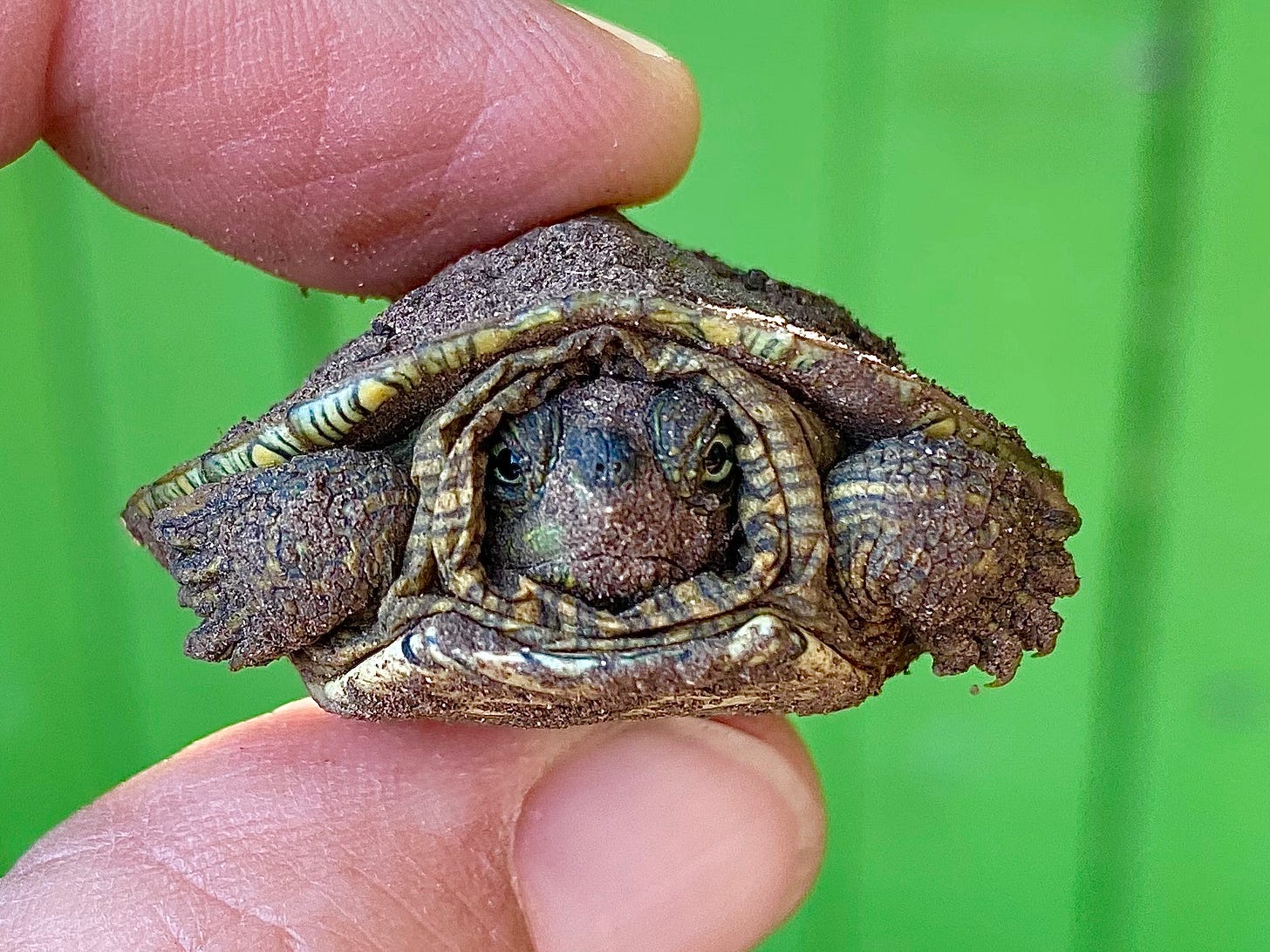
I say it’s a snapping turtle, but that’s a guess from the structure of the face and shell, and looking at those stripes in the photo I wonder if I have it wrong. Corrections welcome, whether in the comments or by reply email.
Saturday we found another unusual one, a butterfly I have never seen that was hanging out on the Maximilian sunflower by our grotto. I guessed it was some kind of swallowtail, but over on Twitter, Dave Pentecost correctly identified it as a white-striped longtail. What a beautiful, strange thing. Here it is flying off, in slow motion:
Requiem for a good dog
In addition to being a gifted filmmaker and a bad-ass outdoorswoman, our neighbor Gina is a master dog whisperer. About half the dogs on our street were rescued by her, usually from the street, including our edgeland ninja black retriever Lupe and her tan sister Lucy, who lives with our neighbors Leila and Jimmy and has the distinction of having once taken down a deer by chasing it into the river, climbing onto its back, and drowning it. One of the dogs that lived with Gina and her partner Mike died this week. Jordy was a cool dog, a dog Gina rescued by literally pulling her out of a dumpster almost 14 years ago. Jordy had other names, including Dumpster Dog, Judy, Junkyard. Chupacabra, Jordums, Brown Bear, Joradiah. She was a character. As Gina put it in her memorial post, Jordy was:
Both a Daddy’s Girl and a Mama’s Girl, an old soul, best friend, rock diver, scamp, watch dog, campfire girl, river rat, garbage gut (ate a wallet, Polaroid film, a tin can, a cable remote, some dead things, and many disgusting balls pulled from the river). She was perpetually fishing-never caught anything but never gave up. All dogs loved her, especially the little ones and the other dumpster dogs.
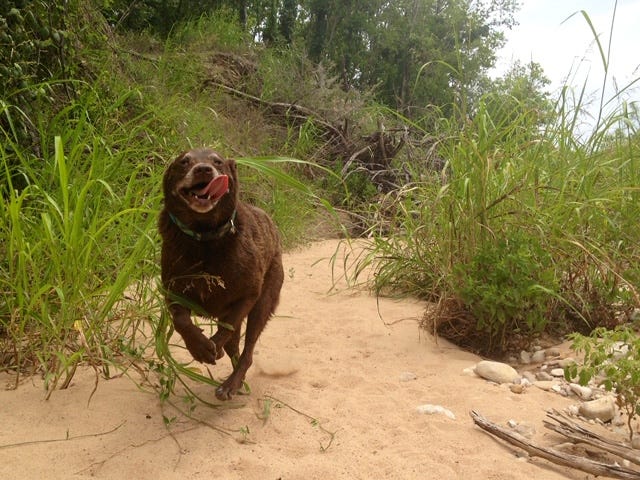
We neighbors will miss her. Even those of us who got chased down the street by her.
Reading list
Against the Grain: A Deep History of the Earliest States, by James C. Scott (2017).
For the Cliff’s Notes version, check out this review and synopsis of the book at the LRB: “Why Did We Start Farming?” by Steven Mithen.
And speaking of hermits, The New York Times ran an amazing profile this week of Tad Jones, who spent decades living in humble silence in the mountain woods outside Santa Cruz, only to be taken by this summer’s fires. “A Vow of Silence, a Cabin in the Woods, a Terrible Wildfire,” by Thomas Fuller and Nicholas Bogel-Burroughs, August 31, 2020.
Have a great week. And if you’re lucky enough to have Labor Day off, try walking out into it like it’s your first time out of the ground.
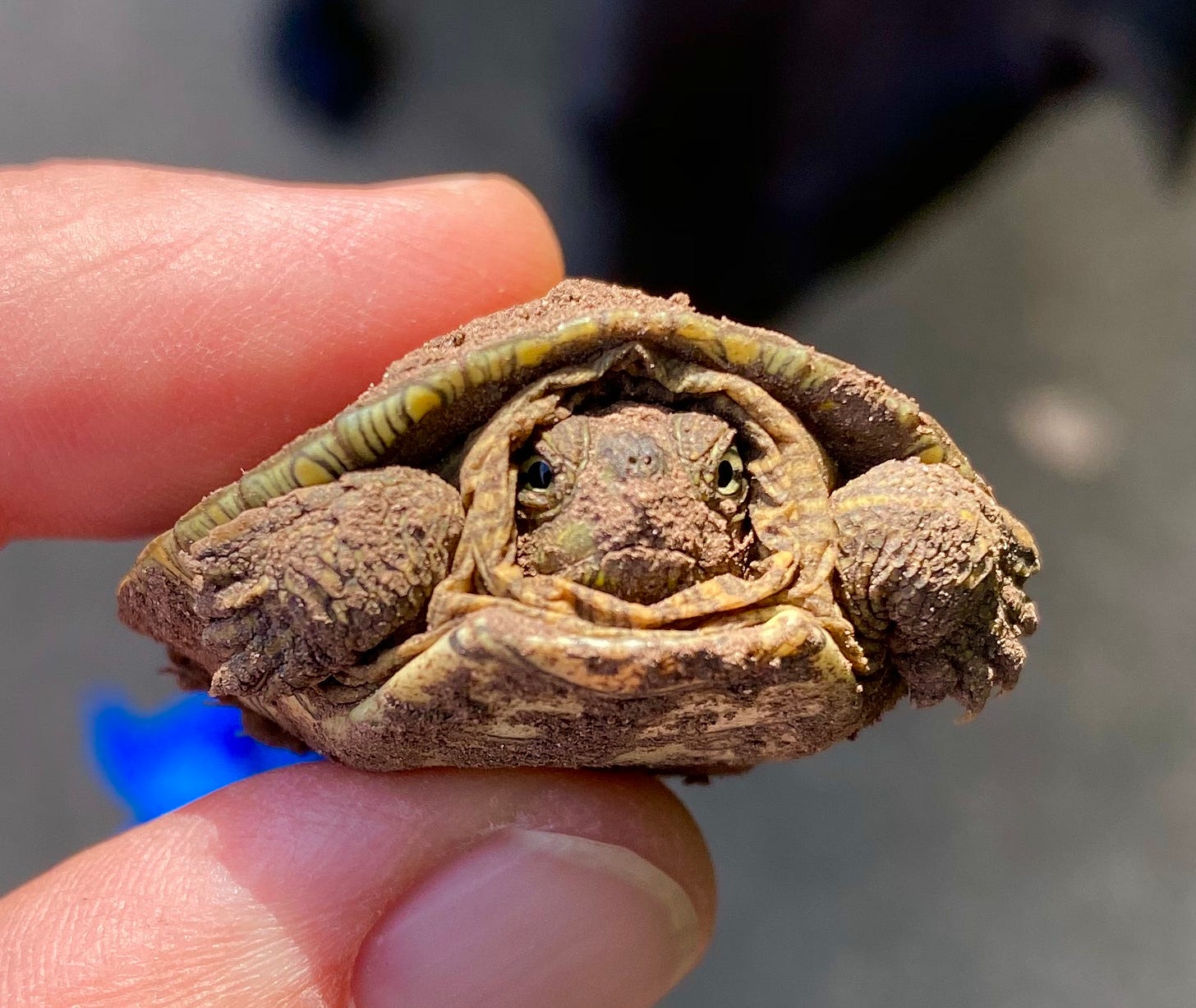


Truly inspiring. A combination of respect for homeless and harmonizing with nature. "Anthropocene conundrum"... lovely!